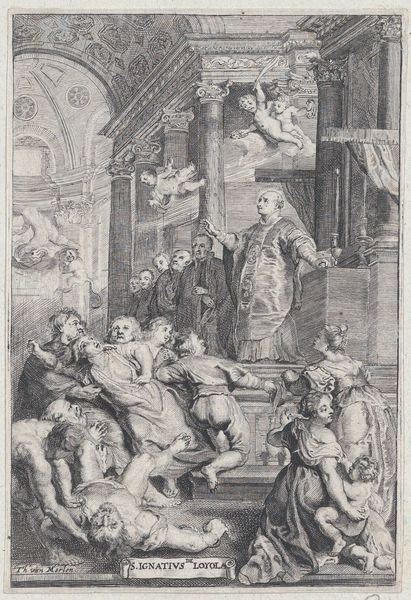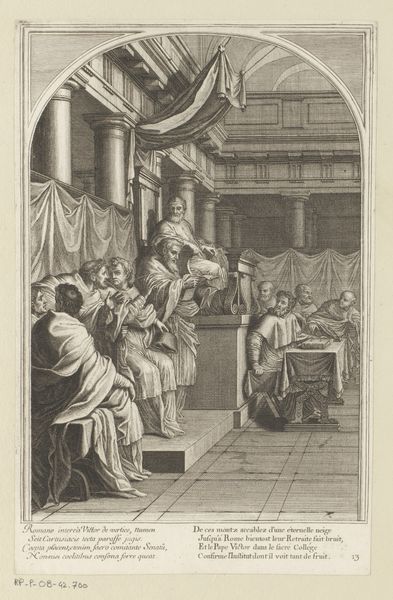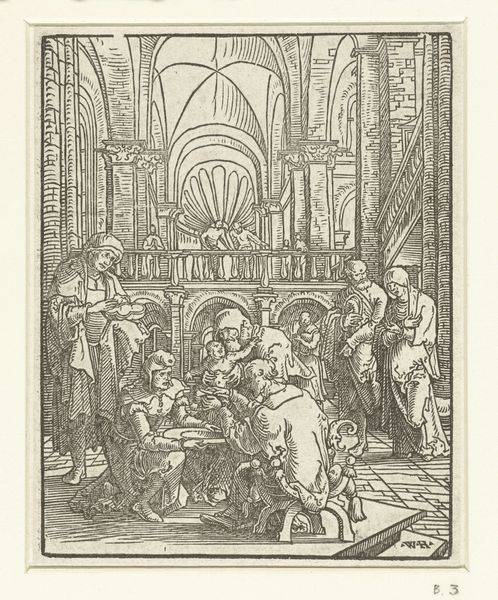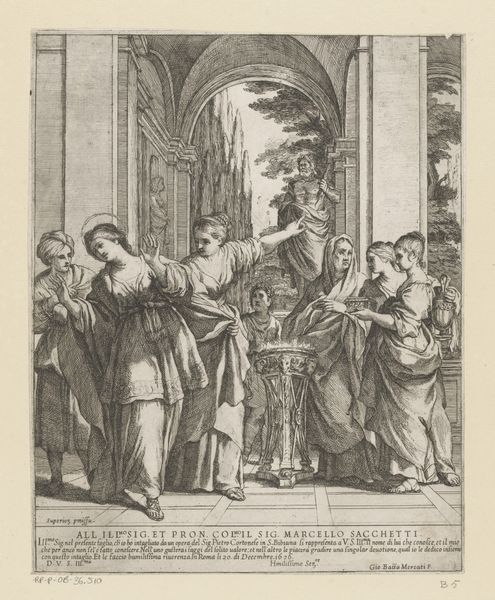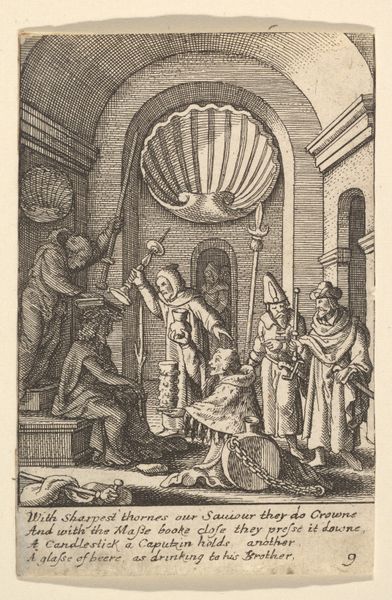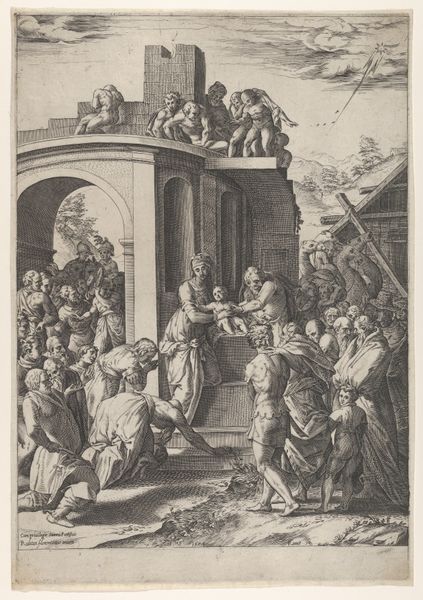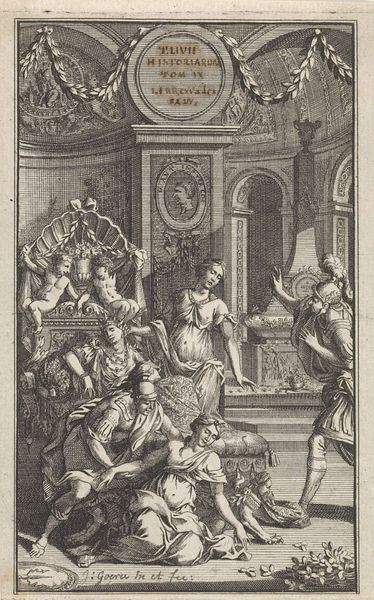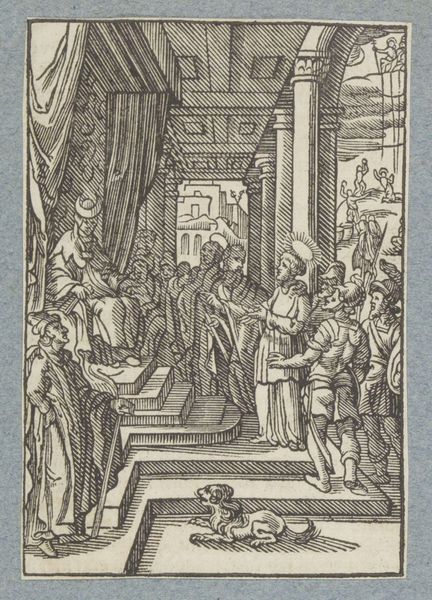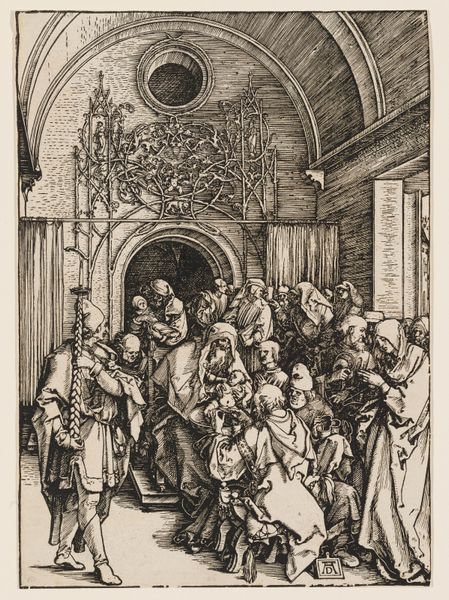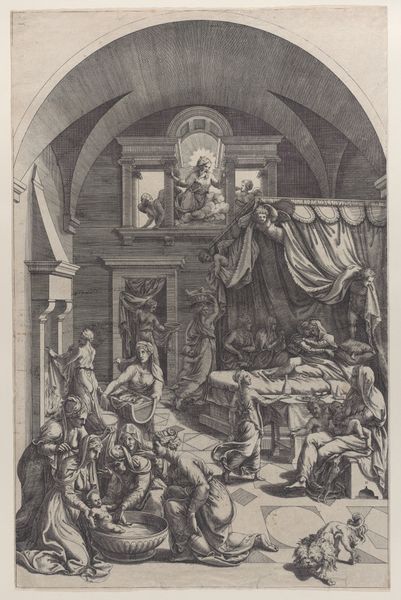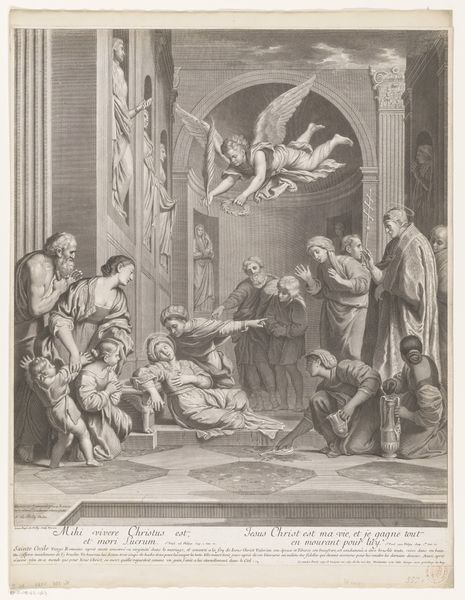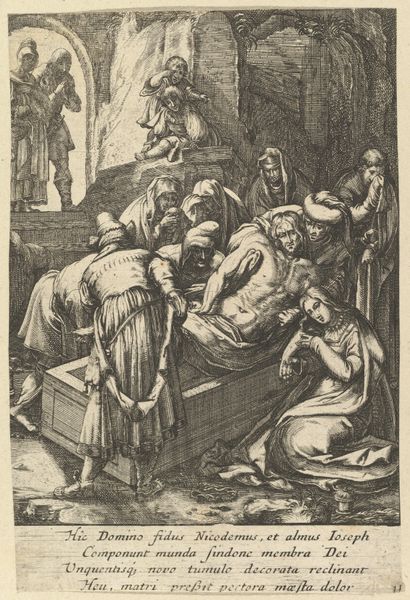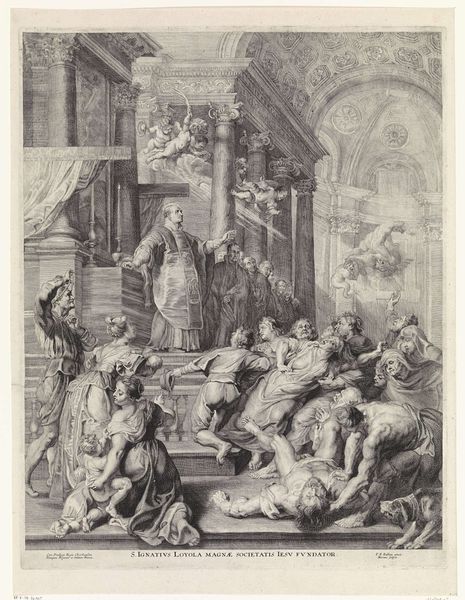
drawing, print, ink, engraving
#
drawing
#
baroque
#
pen drawing
# print
#
pen illustration
#
pen sketch
#
ink line art
#
personal sketchbook
#
linework heavy
#
ink
#
pen-ink sketch
#
thin linework
#
pen work
#
sketchbook drawing
#
history-painting
#
engraving
Dimensions: height 189 mm, width 135 mm
Copyright: Rijks Museum: Open Domain
Editor: Here we have "Keizer Ottho staat Constantia af aan Frederik" created around 1655 by Catharina Questiers. It's a detailed print, looks like an engraving, depicting a historical scene. I’m immediately struck by the dense linework – it gives the image a strong sense of texture and drama. What stands out to you? Curator: The linework, as you pointed out, is key. Think about the labor involved in creating those incredibly fine lines, likely etched into a metal plate. Consider, too, how prints like these functioned. They weren’t necessarily unique artworks but were designed for mass reproduction, acting as visual currency circulating narratives, political ideas, even social aspirations within a growing merchant class. How does the composition support that dissemination, do you think? Editor: I guess because it's a repeatable process? It made art accessible to more people than, say, a painting could be. Does the choice of this scene contribute? A historical moment, maybe to teach a lesson or promote a certain idea? Curator: Exactly. Look closely at the gestures of the figures, the costumes, the setting. All of that contributes to constructing a particular vision of power and legitimacy. Who is commissioning these prints? Who is buying them, consuming them? What does the widespread availability of such imagery do to traditional hierarchies of art production? Editor: That's fascinating, how it's not just the image itself but how it was made and consumed that gives it meaning. So, it's less about individual genius and more about the entire production chain and its impact. Curator: Precisely. This print invites us to question the established notions of "high art" and recognize the material processes, the labor, and the social context that shape its meaning and value. It reveals an entire economy of image production at work. Editor: I hadn’t considered all the implications of it being a print, beyond just the visual aspects. Now I see it as this little piece with a whole system behind it. Thank you! Curator: It’s about understanding the materials and process and how they democratize art, prompting us to reconsider art and labor’s intrinsic connection within a society.
Comments
No comments
Be the first to comment and join the conversation on the ultimate creative platform.
